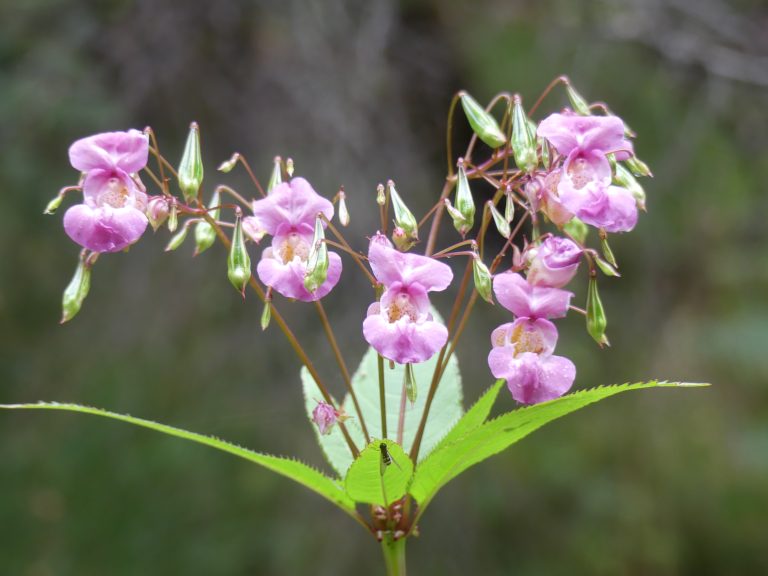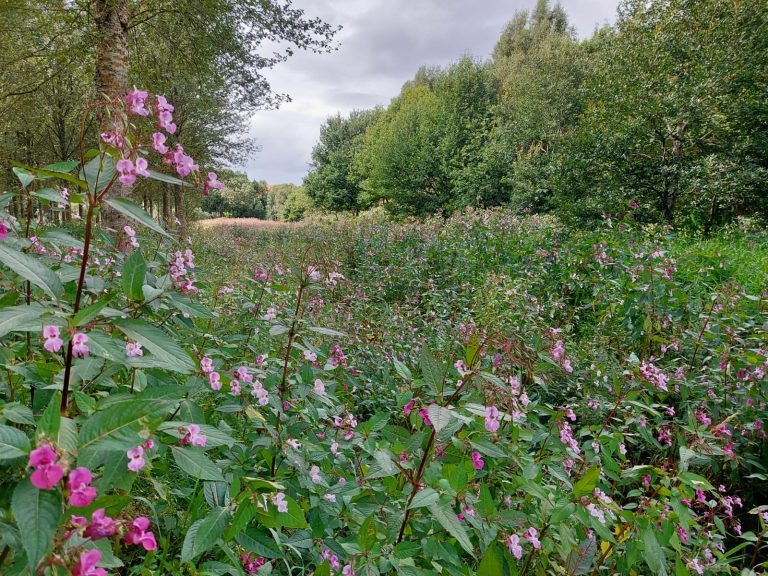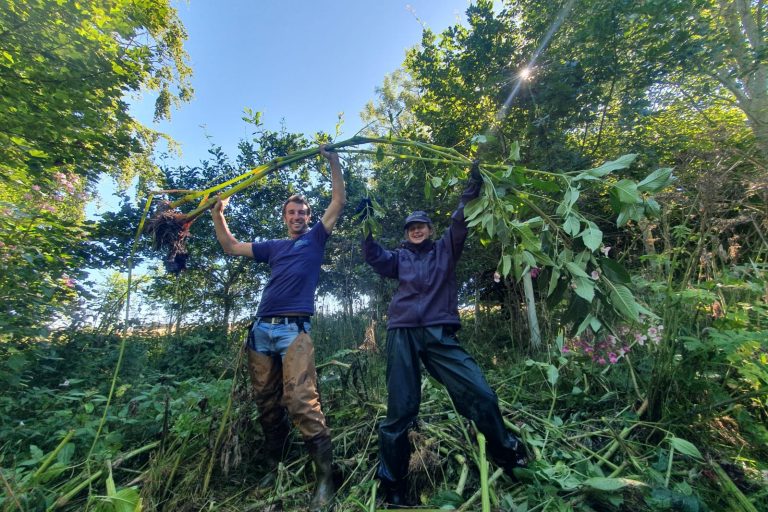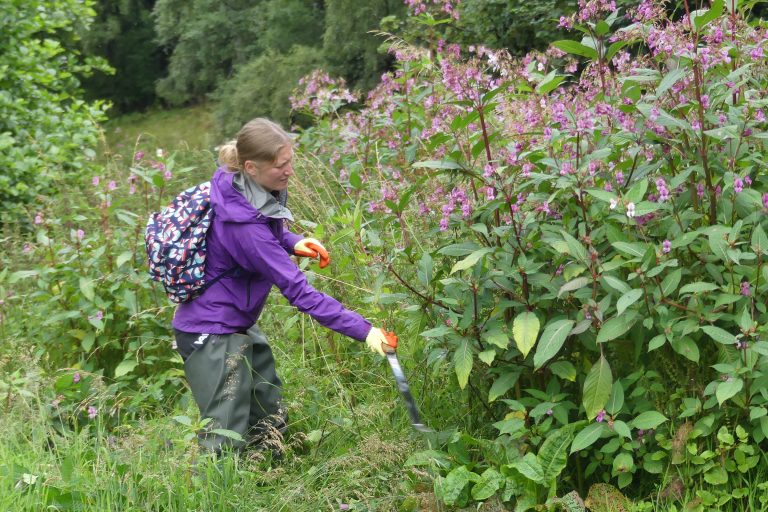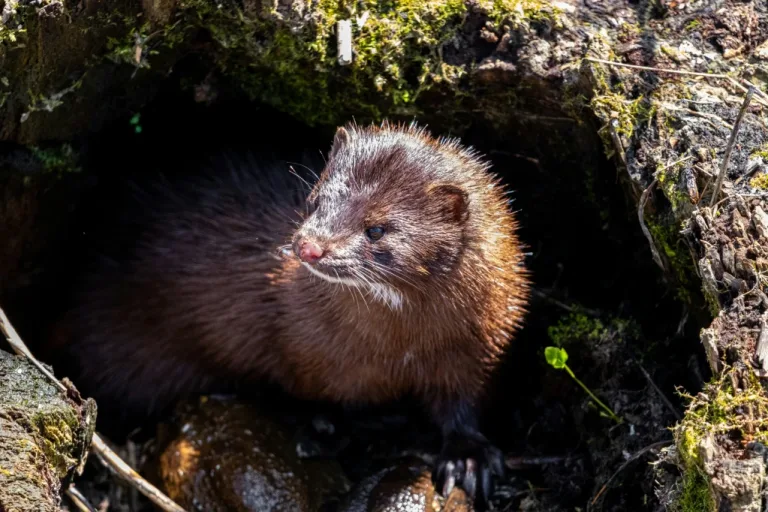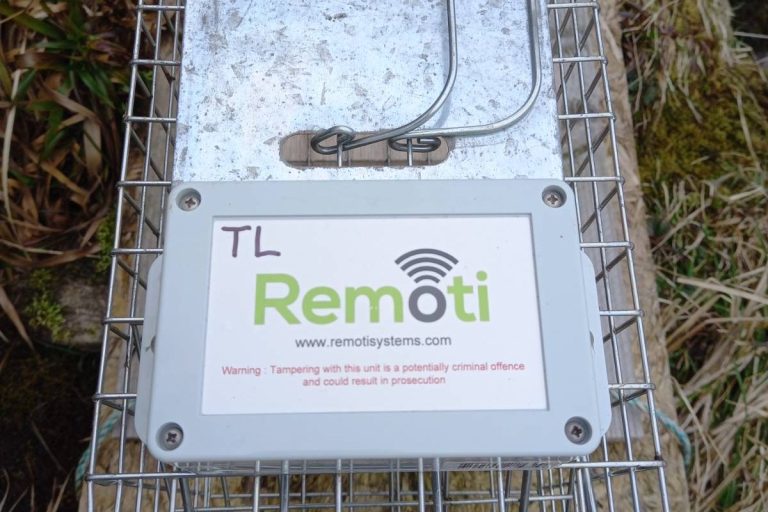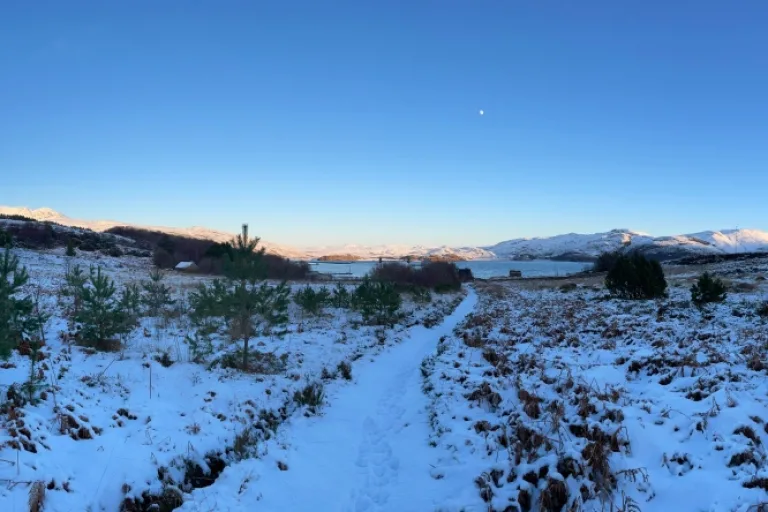Meet the plant
Himalayan balsam (Impatiens glandulifera) is an attractive plant, with a stout, hollow stem, trumpet shaped purple-pink flowers and elliptical shaped green leaves. It grows in dense stands and can be up to 2m tall. It has an explosive seed capsule, which scatters seeds over a distance of up to 7m.
It grows mostly on river banks and in damp woodlands.
It was brought to Kew Gardens in 1839 from Kashmir, and has spread into the wild from there via seed dispersal – by people passing seed to others for garden planting and by seeds spreading from plants and establishing outside garden planting, for example by floating down rivers and becoming lodged and germinating in soft muddy banks.
